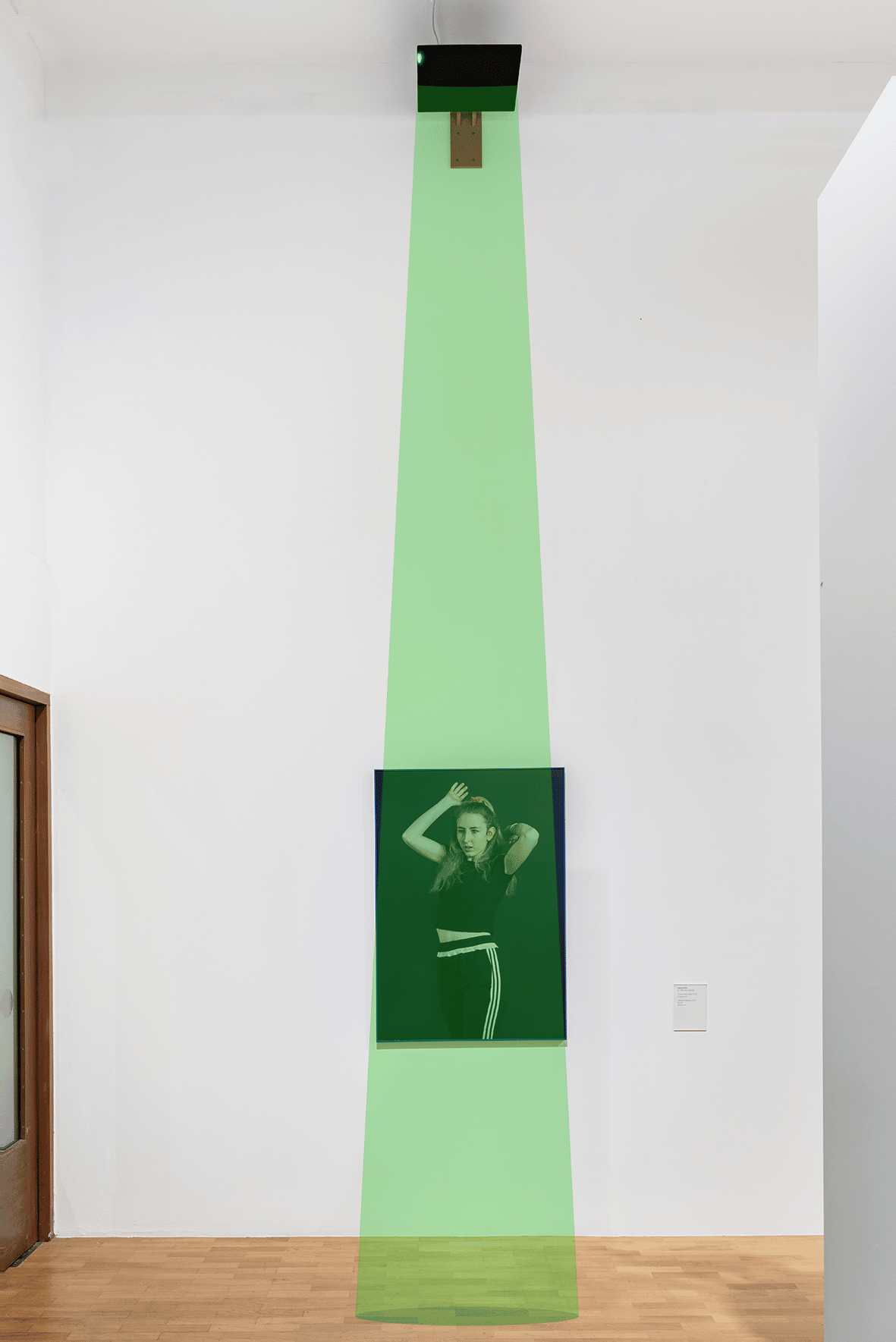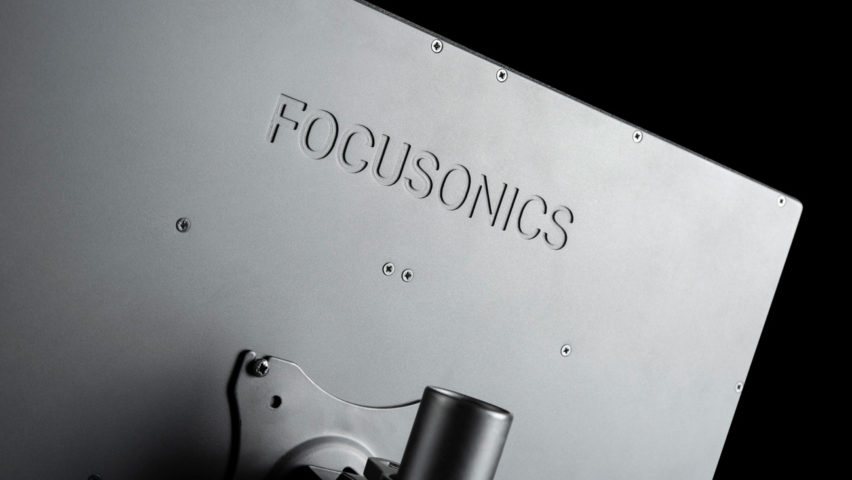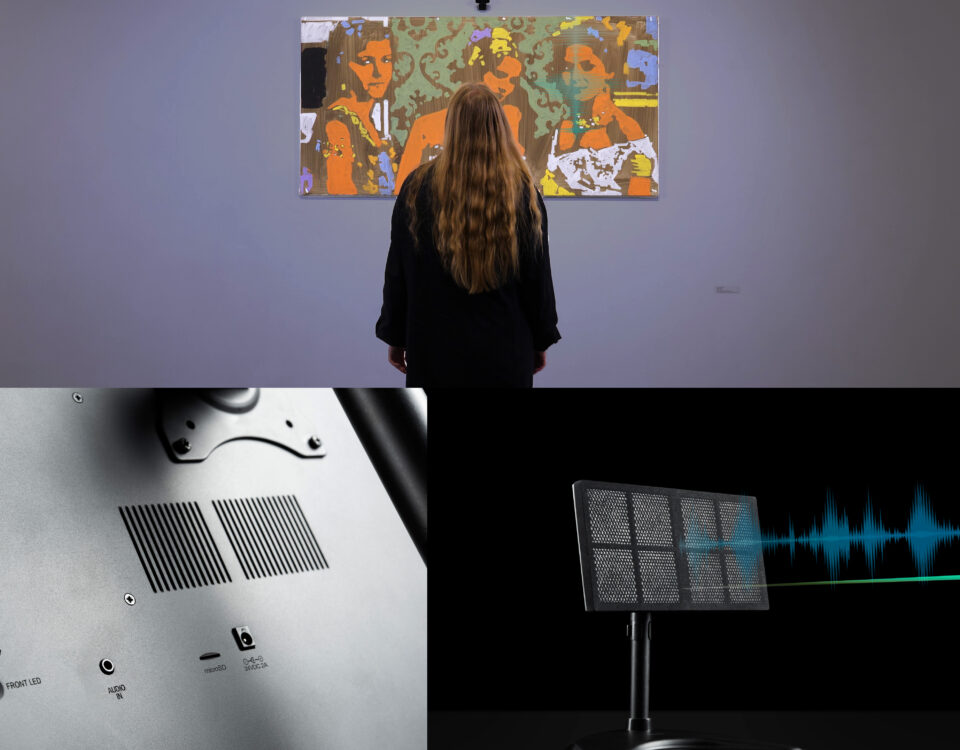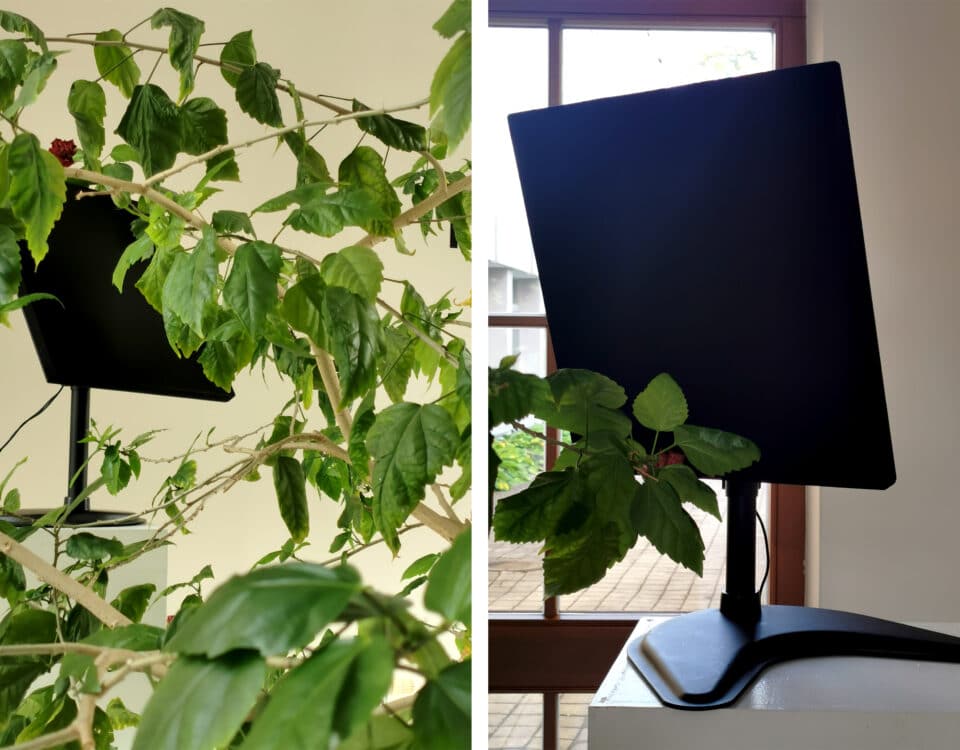This guide describes the tools needed to install Focusonics® directional speakers, presents practical installation guidelines, and showcases the most popular ways to install speakers in environments.
Installation instructions
- On the wall/ceiling: use VESA wall mount brackets (100 mm x 100 mm standard)
- On the desk/table/floor, etc.: use VESA stand (100 mm x 100 mm standard)
VESA mount brackets or the stand used must not cover the ventilation grill on the back of the speaker.

-
Follow the VESA wall mount instructions to set it up on the wall/ceiling or its assembling instructions for the stand.
-
Position the Focusonics® speaker so that its VESA mount points at the back coincide with the holes of the VESA brackets/stand and use the 4 x 4 mm screws provided to attach to the mount bracket/stand.
-
Connect the provided power supply unit to the power outlet (120/230 VAC, 50-60Hz) and the output of the power supply to the designated power input socket at the back of the speaker. The red light should light up at the right bottom of the speaker’s front indicating that the power has been supplied.

Installation guidelines
- Maintain a required distance from the speaker to the listener. For ultrasonic waves to demodulate and achieve the highest audible level, a sufficient distance is needed. A range of 1-3 meters is optimal for a Model B speaker, yet this distance should be increased to 3-6 meters for a Model A speaker.
- The speakers work best in large, open spaces and are not suitable for very small spaces since reflections from the walls and other objects may lead to sound filling the whole space.
- Sound-absorbing materials such as carpets, curtains, etc. could be used in places where reflections occur to reduce their effect and improve sound localization. Rooms that are too echoey would worsen localization results.
- Where possible, direct the sound beam so it can travel large distances before reaching some reflective surface such as a wall. This would weaken the beam's strength before it reflects from some surface, making the reflection weaker.
- Do not install the speaker very close to the walls or wall corners as the sound beam will interact with the wall making its beam wider. Try keeping the speaker at least a metre away from the wall or direct it at an angle from it.
- Install the speaker high enough so that a passing person would not be blocking the beam of sound.
Installation variations
Some examples of how Focusonics® directional speakers may be used in different environments.
Overhead on the ceiling
The speaker is installed overhead on the ceiling with the beam directed downwards. This is the most common usage when the sound needs to be localized at a specific spot. It usually includes a mark on the floor, demonstrating to visitors where to stand to hear the sound.
The sound localization position does not depend on the height of a person if the beam is directed downwards perpendicular to the floor. It is important to maintain a sufficient distance between the speaker and the listener, therefore, this might not be a viable option if the ceiling is low.

Installation view, The London Open 2022, Whitechapel Gallery, London, 30th June – 4th September 2022. Photo: Damian Griffiths.
On the wall next to an object
The speaker is installed on the wall next to an object of interest, such as an exhibit, and directed at some angle toward the listener. This option is suitable for venues that have low ceilings since this helps increase the distance between the speaker and the listener.
It may also help avoid some of the sound reflections as the beam can travel longer distances before encountering a reflective surface. The spot on the floor from which a visitor will hear sound depends on the person’s height.

"Virtual source" effect
Since ultrasonic waves, used by Focusonics® ultrasonic speakers to reproduce sound, reflect very well from most surfaces, the speakers can be used to create a “virtual source” effect. By directing the speaker to a certain object that reflects ultrasonic waves well, it will feel like the sound is coming from that object rather than from the speaker itself. This object can be a TV screen, a sculpture, a glass wall, etc.
Multiple reflections can be used to fill the space with various sounds to achieve unique experiences. For example, bird or animal sounds can be used to create an illusion of their presence in a much more convincing manner than using traditional speakers as the sounds would appear to originate from various objects/surfaces rather than filling the whole space.

The list of installation variations is not exhaustive, therefore, if you have any other ideas on how you would like Focusonics® parametric speakers to be installed in your environment or have any other inquiries, contact us right away.





